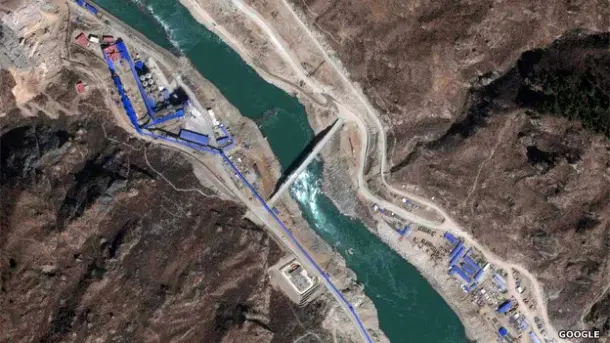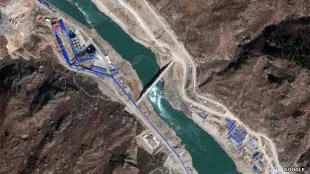News Brief
Indian Government Informs Rajya Sabha of 'Monitoring' China's Brahmaputra Dam Reports Dating Back to 1986
Swarajya Staff
Aug 08, 2025, 07:45 AM | Updated 07:45 AM IST
Save & read from anywhere!
Bookmark stories for easy access on any device or the Swarajya app.


The Indian government has officially acknowledged reports of China initiating construction on a massive dam over the Brahmaputra River in Tibet, close to the Arunachal Pradesh border. In a written reply to the Rajya Sabha on August 7, 2025, Minister of State for External Affairs Kirti Vardhan Singh stated that the government has taken note of these developments, noting that China's Brahmaputra dam project was first made public in 1986.
The minister highlighted ongoing monitoring through established mechanisms, including expert-level talks on trans-border rivers.
China formally began the $167.8 billion Medog Hydropower Project on July 19, 2025, with Premier Li Qiang attending the groundbreaking ceremony. The dam, located on the Yarlung Tsangpo River in Medog County, is projected to generate up to 70 gigawatts of power, surpassing the Three Gorges Dam and comprising five hydropower stations. Chinese state media reports indicate completion by 2030, aimed at enhancing clean energy production.
Downstream nations, including India and Bangladesh, have expressed concerns over potential impacts on water flow, ecology, and flood risks. A report from the Geopolitical Monitor on August 7, 2025, described the project as a strategic move that could "weaponise water flow" amid regional tensions, especially following India's suspension of the Indus Water Treaty with Pakistan after the April 22, 2025, Pahalgam terror attack.
Tibetan experts have warned of seismic risks in the region, with the dam's location near the contested India-China border raising geopolitical alarms. Bangladesh, as a lower riparian state, faces acute effects, as noted in a Diplomat article dated August 7, 2025, emphasizing struggles for equitable water-sharing.
India's proposed Upper Siang Project remains in planning stages, intended to mitigate potential effects from the Chinese dam. Current statistics from the project indicate it could drastically alter the Brahmaputra's outflow, similar to recent drought impacts on the Three Gorges Dam, where water levels dropped significantly as of August 7, 2025.
As of today, August 8, 2025, no official response from China on downstream concerns has been reported, though bilateral dialogues continue.





